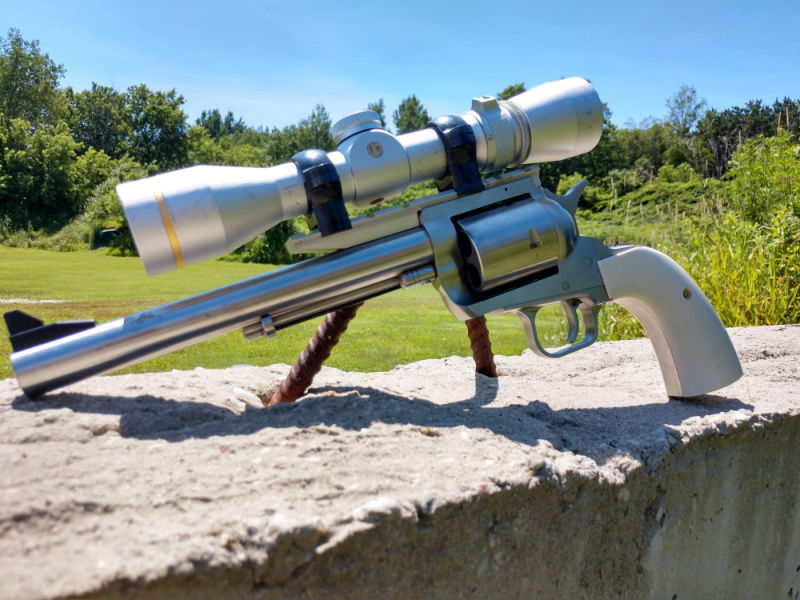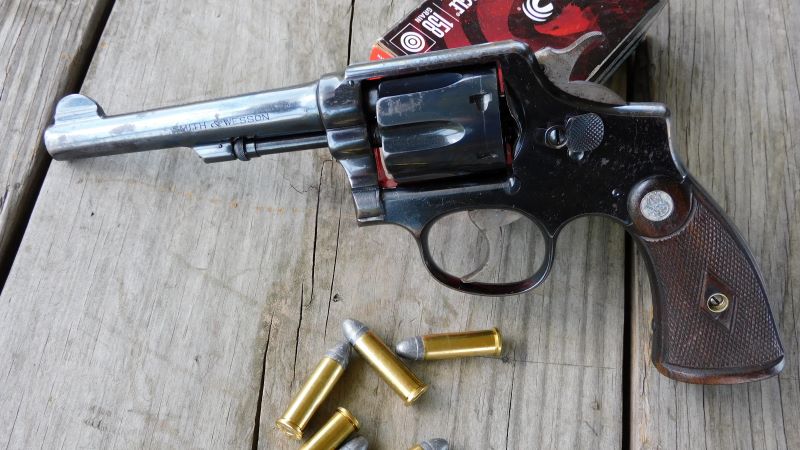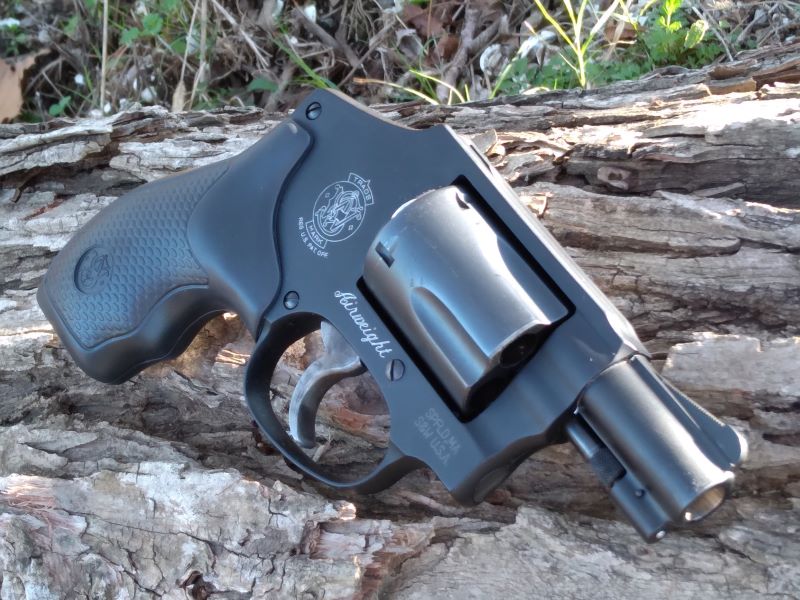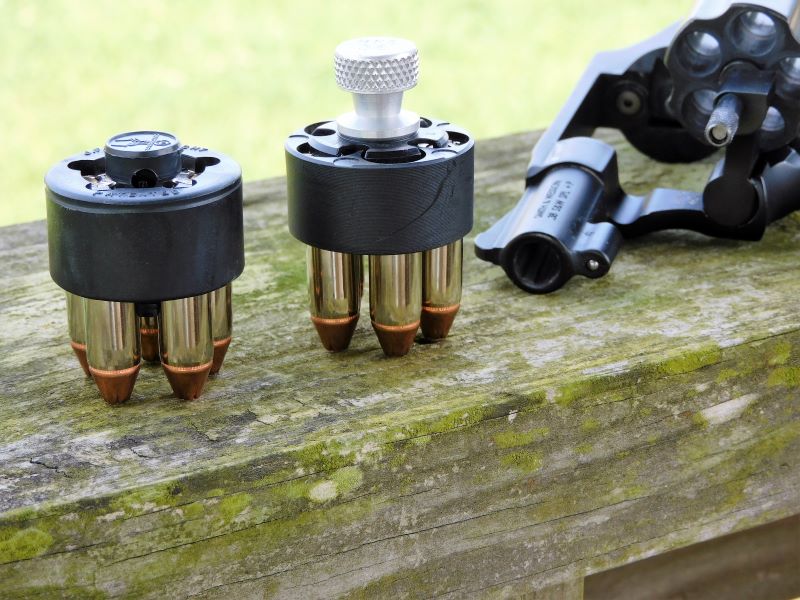If you’re in the market for a revolver, you’ll have to take your pick of single-action vs double-action revolvers. However, single-action vs double-action terms often get thrown around without much explanation. These are types of revolver actions, as well as many semi-automatic pistols. Both types have distinct advantages against one another along with some disadvantages. Here are the differences between single-action vs double-action revolvers and why you might choose one over the other.
What is Single Action vs Double Action?
The first practical revolver was Colt’s Paterson “revolving pistol”, patented in 1835. While the Patterson was a single-action revolver, double-action revolvers appeared within 20 years. Since then, the debate about the merits of both has gone on.

Single-action revolvers require the shooter to thumb cock the hammer to fire. Thumbing the hammer rotates the cylinder and brings the hammer into the firing position. This produces a single action trigger and, when pulled, releases the hammer. With the hammer down, the trigger is dead.
Double action revolver triggers perform two actions — or double actions. They cock and release the hammer. You don’t have to thumb cock the hammer to shoot and you can fire as quickly as you can pull the trigger. Most double-action revolvers have an exposed hammer, so you can cock the hammer if you want to. These handguns are sometimes called double action/single action or DA/SA.
Single Action Revolvers
The Colt Single Action Army is the most recognizable single-action revolver. First introduced in 1873, it remains in production today and is a veteran of Western films and TV. Uberti and Pietta make screw-for-screw replicas of the Colt in a number of calibers. Ruger has made materially improved versions like the Blackhawk since the 1950s. Beefed-up single actions in large calibers from makers like Magnum Research and Freedom Arms are also in the mix alongside inexpensive rimfire revolvers like the Heritage Rough Rider. All of these have the same inherent strengths and weaknesses compared to double-action revolvers.

Pros
Reliability: Despite their reputation for few moving parts, revolvers actually have quite a few compared to modern autoloading pistols. With that said, single-action revolvers have fewer moving parts compared to their double-action counterparts.
Double-action revolvers usually include a swing-out cylinder requiring an ejector assembly and cylinder release. In addition, double-action revolvers require a rebound slide, hammer pawl, and spring to cock the hammer and reset the trigger.
Most Colt-style single-action guns have a simple hinged loading gate and spring-loaded ejector rod housed under the barrel to load and eject the cartridges. The hammer and hand work in tandem to index the cylinder. Meanwhile, the trigger simply releases the hammer’s sear when pressed. With fewer parts to break, the single-action revolver has a slight mechanical reliability advantage.
Accuracy: Because the trigger simply releases the hammer, there is no mechanical linkage to work through to fire the gun. The single-action revolver has a very short and light trigger pull of only a few pounds.
A double-action revolver’s trigger press could be 10 pounds or more because your finger has to move all those internal parts and springs to bring the hammer back and let it fall. However, an exposed hammer double action revolver theoretically shoots as accurately as a single action if cocking the hammer before each shot. Single-action revolvers have the edge overall with the number of available sighting arrangements and barrel lengths.

In particularly large common double-action cartridges like the .454 Casull or .500 S&W Magnum, a double-action mechanism can also be dangerous. When the pistol twists and recoils in the hand, the shooter can accidentally fire a second round with a second unintentional trigger pull. Single-action revolvers in large cartridges tend to be slimmer. In addition, the danger of an unintended discharge is reduced because the trigger is dead once the trigger is pulled.
Cons
Few Safety Features: The single-action revolver’s simplicity can be a detriment. Most single-action revolvers are so simple there are no real safety mechanisms to prevent accidental discharge. Colt guns and their clone’s hammers include a half-cock notch. This feature aids with loading and unloading the revolver. The half-cock also prevents discharge if your thumb slips before going to full cock. The Colt’s safety notch breaks easily, allowing the pistol to discharge if dropped.
Newer guns like the NAA Mini revolver can discharge when dropped with the hammer resting on a live round. However, these revolvers also have notches between chambers to safely carry all chambers loaded. Modern Ruger revolvers, and some options from Uberti, feature a transfer bar or hammer block safety that eliminates that risk.
Even with the latest safety features, single actions can be somewhat unsafe to make safe. If you’ve cocked the hammer and decided against firing the revolver, you have to carefully lower the hammer, which can slip from your finger and discharge.
Loading, Firing, Reloading: Single-action revolvers are lightning fast out of the holster and, with practiced hands, quick to shoot. When compared to double-action revolvers; loading, firing, and reloading consumes more time. Single-action revolvers typically load through a loading gate that exposes one chamber at a time. Loose rounds are fed in one at a time. To unload, open the gate and poke each case out with the ejector rod. Typical double-action revolvers have swing-out cylinders that allow for rapid loading, reloading, and simultaneous ejection of empties. Cocking the hammer for every shot doesn’t take much more time than a double-action gun, but it’s an extra step to fumble.

Double Action Revolvers
Double-action revolvers have been fielded since at least the British Beamont-Adams in the 1850s. However, they’re more typically associated with swing-out cylinder revolvers produced by Colt and Smith & Wesson from the turn of the 20th century to the present day. Today, Colt, Smith & Wesson, Taurus, Charter Arms, Kimber, and many others produce double-action revolvers.

Pros
Carry Friendly: Single-action revolvers vary considerably in barrel length, but the frame, cylinder, and grip frame size tend to remain the same. Modern double-action revolvers feature many different frame sizes, barrel lengths, and hammer configurations. This is particularly useful for concealed carry applications. The most carry-friendly double-action revolver is the hammerless snub nose type. These lack an exposed hammer that can snag on clothing. The combination of a small grip, short barrel, and wide cylinder rounds out a package that blends in under clothing and conforms to the body’s curves.

Quick Shooting: While there are quite a few veteran cowboy action shooters running single-action revolvers quickly, the average shooter is just as fast with a double-action revolver. There is no added step of thumbing back the hammer to slow you down.
Quick Loading: While many early double-action revolvers are gate-loaded like single-action guns, most modern double-actions have a swing-out cylinder with unfettered access to all the chambers for loading and unloading.

Cons
Heavy Trigger Pull: What we gain in a higher rate of fire with a double action revolver, we also gain through a heavier trigger pull. The trigger works against the mainspring and rebound spring to cock and then releases the hammer. Because of all the work the trigger is doing, it also has a long distance to travel before the hammer falls along with a long journey back to fire the next shot. If you get into too much of a hurry, it’s possible to let the trigger out incompletely. As a result, the revolver skips over the next live round instead of firing it. With a single-action gun, the trigger is always dead after each shot.
Which Would You Choose?
For most of us, buying a handgun is to serve a purpose, often for personal defense. For that task, a good double-action revolver is better than a single-action six-shooter in most aspects. They are faster to shoot and load while hard to accidentally discharge.
You don’t have to be a fan of Westerns or Red Dead Redemption to want a single-action revolver. Conventional caliber single actions slow down the training process and are handguns just about anyone can fire — even among those without the hand strength to cycle a double action gun. For training new shooters and effectively arming someone who would get mixed results with anything else, single-action revolvers matter. In big-bore cartridges, single actions continue to hold their own as a hunting and wilderness defense option.
It’s tempting to say the revolver, in general, is obsolete for several reasons. However, both single-action and double-action remain viable. Of course, they’re viable because our ancestors used them to great effect on man and beast. Viable in the context of a time when that was all that was available, but there are more ideal options now. If history has taught us anything, it’s that there is no handgun design to rule them all. Single-action and double-action revolvers are still with us for good reason and worth factoring into your kit.

